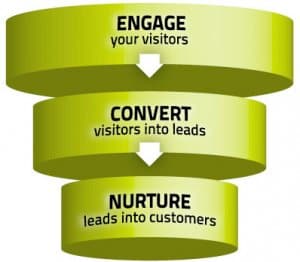Why Lead Nurturing is Necessary to Convert Leads into Sales
 The majority of marketing leads, regardless of their quality, are lost before being converted into a sale. In today’s competitive global marketplace every company needs a system for improving their conversion rate and capturing more leads. B2B marketing and lead generation experts have determined that a lack of effective lead nurturing is the primary cause for many missed opportunities. In this article we’ll discuss why lead nurturing is necessary to convert leads into sales, what lead nurturing can do for you and how to nurture leads.
The majority of marketing leads, regardless of their quality, are lost before being converted into a sale. In today’s competitive global marketplace every company needs a system for improving their conversion rate and capturing more leads. B2B marketing and lead generation experts have determined that a lack of effective lead nurturing is the primary cause for many missed opportunities. In this article we’ll discuss why lead nurturing is necessary to convert leads into sales, what lead nurturing can do for you and how to nurture leads.
Why is lead nurturing necessary?
Lead nurturing is necessary to build relationships with future consumers. The majority of site visitors and leads gained from landing pages are not ready to buy right away. Instead, buyers are using online resources to research products and services before they are ready to make a purchase. They are comparison shopping for budget approval and the actual decision may not be made for weeks or even months.
Handing over semi-qualified leads to sales people before they are ready wastes time and resources. After first contact is made and it does not appear there will be an immediate sale, the sales person assumes the lead is cold. This could result in the lead being discarded, lost or ignored by a lack of follow-up or attention. That is why these leads need to be nurtured first.
What can lead nurturing do?
Lead nurturing is the process of cultivating prospects that are not yet ready to buy. Research has shown that lead nurturing does produce measurable results compared to traditional methods. Considering 79% of all leads generated by marketing are not followed up by sales and out of the remaining 21%, approximately 70% are discarded by sales as not being qualified, that means less than 10% of all leads are actually followed up, if there is not a lead nurturing strategy in place.
Lead nurturing is necessary since it reduces the number of marketing-generated leads ignored by sales to as low as 25%. Instead of 90% going unanswered, only 25% will be ignored. That difference alone justifies the need for lead nurturing.
Lead nurturing also improves the conversion rate by up to 7%, due to the trust that is built between the lead and the business prior to the sale. Lead nurturing is designed to build brand awareness by developing a mutually beneficial relationship with the potential customer without forcing them into a situation where they feel compelled to make a purchase.
How do you nurture leads?
Content is what drives the lead nurturing engine. It is not just about posting random white papers, case studies, articles, online demos and webinars and hoping that someone will download and read them. Neither is it sending out a mass drip email campaign to every possible lead.
Lead nurturing should be about providing the right content at the right time that addresses a problem that a prospect is focused on resolving. Lead nurturing can be done via email, but it’s not about the delivery system of email, it’s about the perceived relevance of the content delivered via the email as well as the timing of the delivery. Quality content at the right time is essential for success.
To get the most out of leads and save valuable time, it is necessary to implement a carefully planned lead nurturing strategy as part of a complete marketing automation program. Significantly less leads will be ignored, an increase in trust will be established, and as a result more leads will be converted simply by using lead nurturing.
If you’re interested in understand how the most innovative, easy-to-use marketing automation and revenue generation software helps their customers nurture leads then contact Lead Liaison using the short form above.











